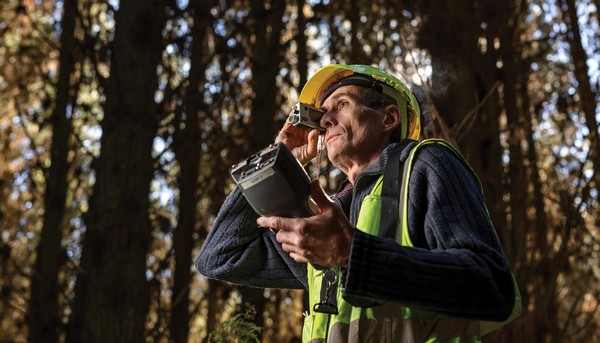Puruki Experimental Forest is an exemplar of a sustainably managed, highly productive Pinus radiata planted forest that also delivers multiple ecosystem benefits to society.
Puruki is part of the Purukohukohu Experimental Basin established in 1968 to study the impact of land use and land use change on water quality and yield. About 40 minutes’ drive south of Rotorua, Purukohukohu is divided into three land uses: pasture, indigenous forest and pasture planted in pine in 1973 – the Puruki Forest. Scion manages the site today under lease from Pāmu (formally Landcorp).
Data and models from Puruki underpin almost every management decision modern forestry companies make today; something never imagined at the time the forest was established.
During the first rotation Scion’s (or NZFRI at the time) interest focussed on productivity, biomass allocation and the impact of stocking levels, as well as understanding upper-mid-crown yellowing (UMCY) (magnesium deficiency). The objectives for the second rotation were more ambitious, incorporating experiments to assess whether UMCY was genetically heritable, how productivity was affected under low and high levels of sunlight, the growth and productivity of new genotypes, and later, the use of Lidar to monitor forest carbon stocks and improve the allometrics for calculating carbon stocks.
The long-term experimental forest to monitor the impacts of change over two rotations has supported numerous research areas across site effects, genetics, and silviculture. In particular, we now have a greater understanding of the impact of land-use on water yield and quality, and soil carbon and nutrients. Within the forest we have extended our fundamental knowledge on forest health, nutrition and disease, growth by genetics x environment x nutrition, growth by solar radiation and the use of LiDAR for remote monitoring. The number of academic papers published is 67 and growing. If Puruki were a person, they would have a Scopus h index of 26.
From the data, two important tools have been developed that underpin New Zealand’s carbon and nutrient predictions: C_Change, used for government and research C reporting and the nutrient balance model NuBalM, which can support sustainable productive forest management.
As we look to the future, Puruki has the potential to demonstrate new forest systems and adaptive management practices that address the challenges of a changing climate. Access to a network of long-term experimental sites is key to developing integrated research programmes that will secure forest benefits for future generations.
The second rotation is now 24 years old and nearly ready to harvest. The subsequent forest offers to extend and challenge the boundaries of existing planted forests to meet the challenges of a changing world.
“Puruki has shown Timberlands what is possible from a productivity standpoint and really highlighted the importance of forest nutrition. The outcomes from Puruki are helping to inform our research and development programme that is targeting a step change in forest productivity." - Dr John Moore, Research & Development Manager, Timberlands
Funders: Ministry for the Environment, NIWA, Forest Growers Research and Strategic Science Investment Fund
Collaborators: NIWA, Pāmu (Landcorp Farming)

